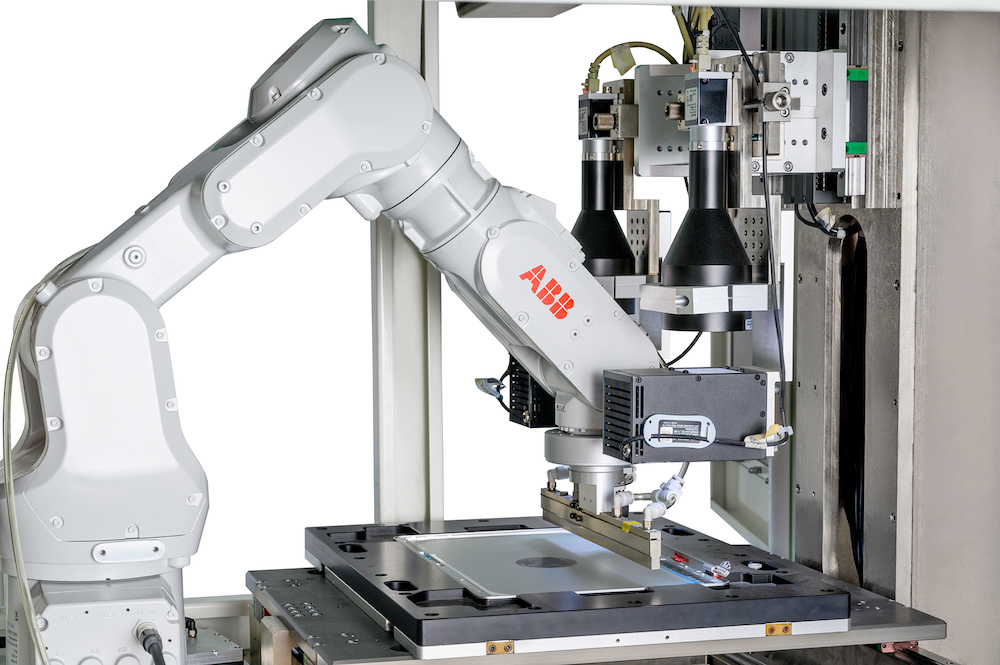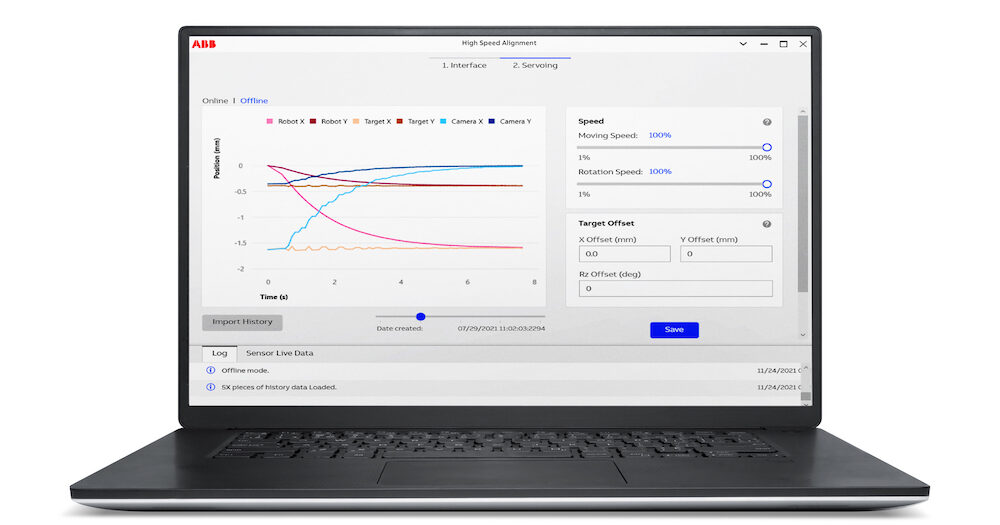Hybrid AI-powered computer vision combines physics and big data
SOURCE: HTTPS://WWW.SCIENCEDAILY.COM/
AUG 14, 2023
ABB software increases industrial robot speed 70%
SOURCE: THEROBOTREPORT.COM
APR 12, 2022

ABB Robotics has launched its High Speed Alignment software that enables users to increase the speed of 6-axis robots by 70% and accuracy by 50%, reducing time-to-market while increasing accuracy levels. The software is compatible with ABB’s IRB 1100 and IRB 120 industrial robots.
The PC-based software includes Visual Servoing technology using one or more cameras, combined with a computer vision system, to control the position of the robot relative to the workpiece. As the robot is moving, the cameras continuously capture image information that the computer vision system processes to cross check and adjust the robotic movements to deliver 0.01 to 0.02 millimeter precision.
“Sales of smartphones, wearables and other high-tech devices are growing and advances in electronics are gathering pace,” said Liang Rui, managing director, ABB’s Robotics Electronics business line. “As devices become smaller and more powerful, new automation solutions are required to quickly and accurately place components, ensuring that production can keep pace with demand while maintaining the highest levels of product quality.”

ABB’s articulated 6-axis robots are highly flexible for handling complex tasks in tight spaces and can perform a variety of meticulous placement tasks. The High Speed Alignment software was developed to find a balance between speed and accuracy.
Along with commissioning and tuning, system integrators and manufacturers can benefit from a reduction in deployment time – down from an entire shift of eight to just one hour. Minimal programming experience is required, as the software has an intuitive user interface. Additionally, the software is compatible with a wide range of cameras, and IRC5 and OmniCore robot controllers, allowing system integrators to adapt existing installations.
“Our latest innovation to the RobotWare family, the High Speed Alignment software enables electronic manufacturers to increase productivity by 70% while maintaining 0.01-0.02 mm accuracy levels,” said Rui. “This is a breakthrough technology for the electronics assembly market.”
LATEST NEWS
Augmented Reality
Hi-tech smart glasses connecting rural and remote aged care residents to clinicians
NOV 20, 2023
WHAT'S TRENDING


Data Science
5 Imaginative Data Science Projects That Can Make Your Portfolio Stand Out
OCT 05, 2022

SOURCE: HTTPS://WWW.SCIENCEDAILY.COM/
AUG 14, 2023
SOURCE: INDIANEXPRESS.COM
OCT 24, 2022